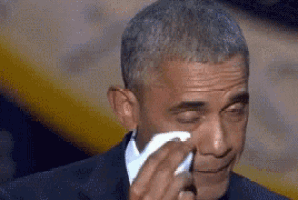

In 2005, Kamaran contacted this photo agency. Photographers were competing with each other over who got bloodier photos. So at that time he was only taking photos of the explosions.
#Obama ahmed wow thats a nice clock professional#
Najm: Understanding photography at that time was really hard because we had no academy, there is still no university or any academy to teach the professional way of taking photos, or photojournalism. Thornburgh: There was something wrong in the photos, or the publications? But it never worked, because there was something wrong in it. And he was trying to show the photos to my sisters, and he was proud that he captured some photos with conflict in them, and trying to share them with the Iraqi publications. And I still remember when he was coming back with the bloody photos from the explosions. Sometimes I was driving the car, sometimes he went on his own. We’re from Kirkuk, we were living in Sulaymaniyah, but he was going back to Kirkuk to photos. In the latest episode of The Trip podcast, Sangar Khaleel talks about why he risks all to tell the story of his city. He was just spreading the photos with them. And after 2003 when we had so many explosions after Saddam Hussein fell, he was going to Kirkuk and all the places that there was conflict and terrorist attacks, just to bring back photos for the local publications. I’m actually the youngest brother, and we’re six brothers. It came through your brother who had been a photographer? Is that right? And I’ve known one of the guys who founded the agency with you and your brother, also for a long time-Sebastian Meyer, who is now back in New York. I think a lot of journalists in foreign correspondents have. I’ve known about your work and your agency for a long time. I think having the same drink has given me more power and energy. Najm: While I do that same job that he was doing. Thornburgh: This is your own kind of meditation on him or memory of him. So this is what I am drinking on a daily basis. Najm: I drove him to Kirkuk, and that was the last time that I saw him. Thornburgh: When you were driving him around and you guys had some juices? Najm: It is the last drink that I drunk with my brother in 2014 when I was driving my car. Why did you choose Jumex as the thing we should drink? Especially when it’s very hot and sunny outside. Thornburgh: That is the sound of opening a Jumex pineapple coconut flavored drink. I’m going to let my fingernails grow out before I come to Iraq again so I can open all the foil. Tell me what were as we, pull the foil tabs off of these things. Nathan Thornburgh: Well, let’s get into this.
#Obama ahmed wow thats a nice clock full#
Listen to the full episode, for free, on Apple Podcasts, Spotify, Stitcher, or wherever you get your podcasts. This is an edited and condensed transcript from my conversation with Ahmed. That to me says it all: legacy, longevity, layers. As the head of Metrography, the agency that his brother started with Sebastian Meyer, Ahmed is helping over 70 Iraqi journalists work to tell their own story. Kamaran’s brother Ahmed turned away from the conservative religion of his own family by not only searching for his brother, but by adopting Kamaran’s life’s mission as his own.

In this episode’s interview, we’re reaching deep into one of those tragedies, the disappearance of photojournalist Kamaran Najm. The layers of life in this beneath this fortress have to give you some sort of optimism, or at least a longer lens on the current tragedies of Iraq. I feel like we’ve been talking a lot about time in these Iraq episodes, the idea that a place this ancient must be able to persevere through the agonies of the present. There have been people living, building, and dying on that exact spot since at least 5,000 BC, and the dramatic height of the citadel comes from all the layers of life, the mudbrick buildings that rose and collapsed and then were built on top of, over and over, through the millennia. This structure is the oldest continually inhabited place on earth. I’ve been doing most of the recording, including this interview, in the corner of my room at the Fareeq Hotel, but life in Erbil is really about the streets, the endless blocks of food carts and lamb stew joints on Iskan Street, the kids darting in and out of the archways of the market, and more than anything, the imposing sight of the Citadel, a dun-colored fortress atop a mound that rises almost 100 feet above of the rest of the flat cityscape Seems fitting to end on a call to prayer at the Erbil Citadel. And here we are, at the last of our episodes in Iraq.


 0 kommentar(er)
0 kommentar(er)
